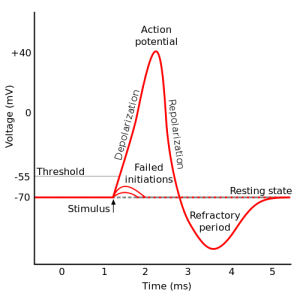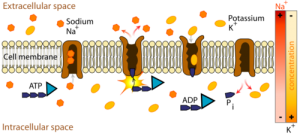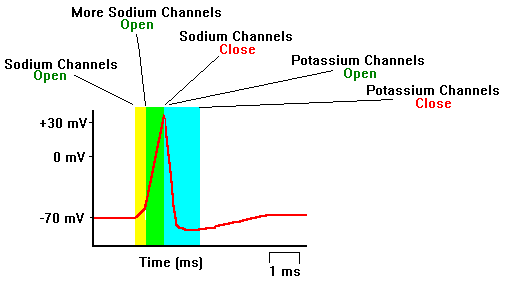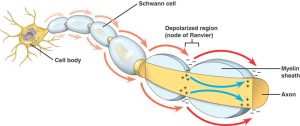Voltage-gated ion channels are proteins that permit or prevent the passage of ions into the cell. In the neuron, sodium and potassium channels are of greatest interest. “Voltage-gated” refers to the capacity to change conformation based on membrane potential. This means that a voltage-gated channel will open at certain membrane voltages and close again at a different voltage.
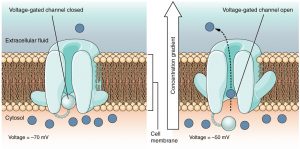
(“Voltage-gated ion channels”, 2016)
